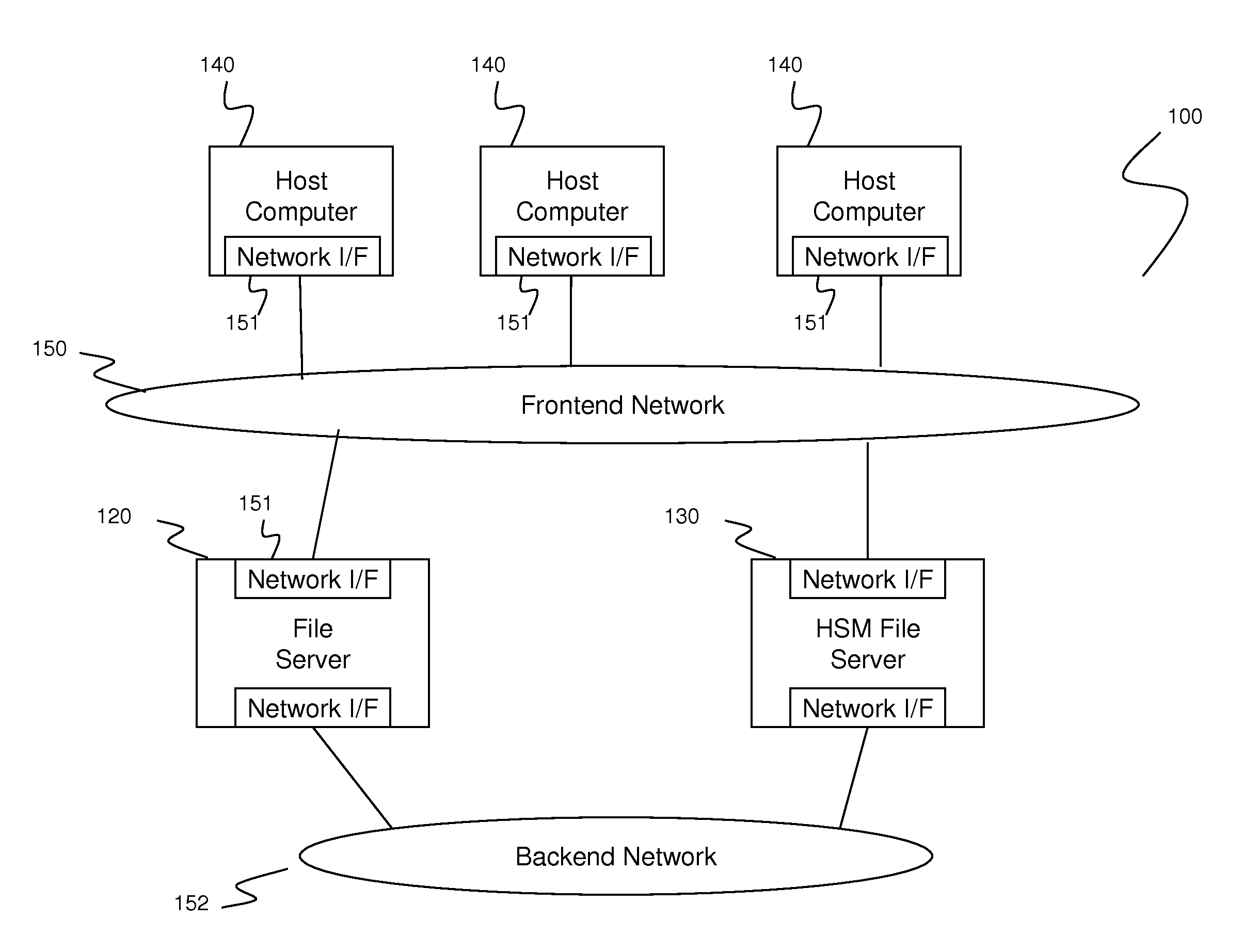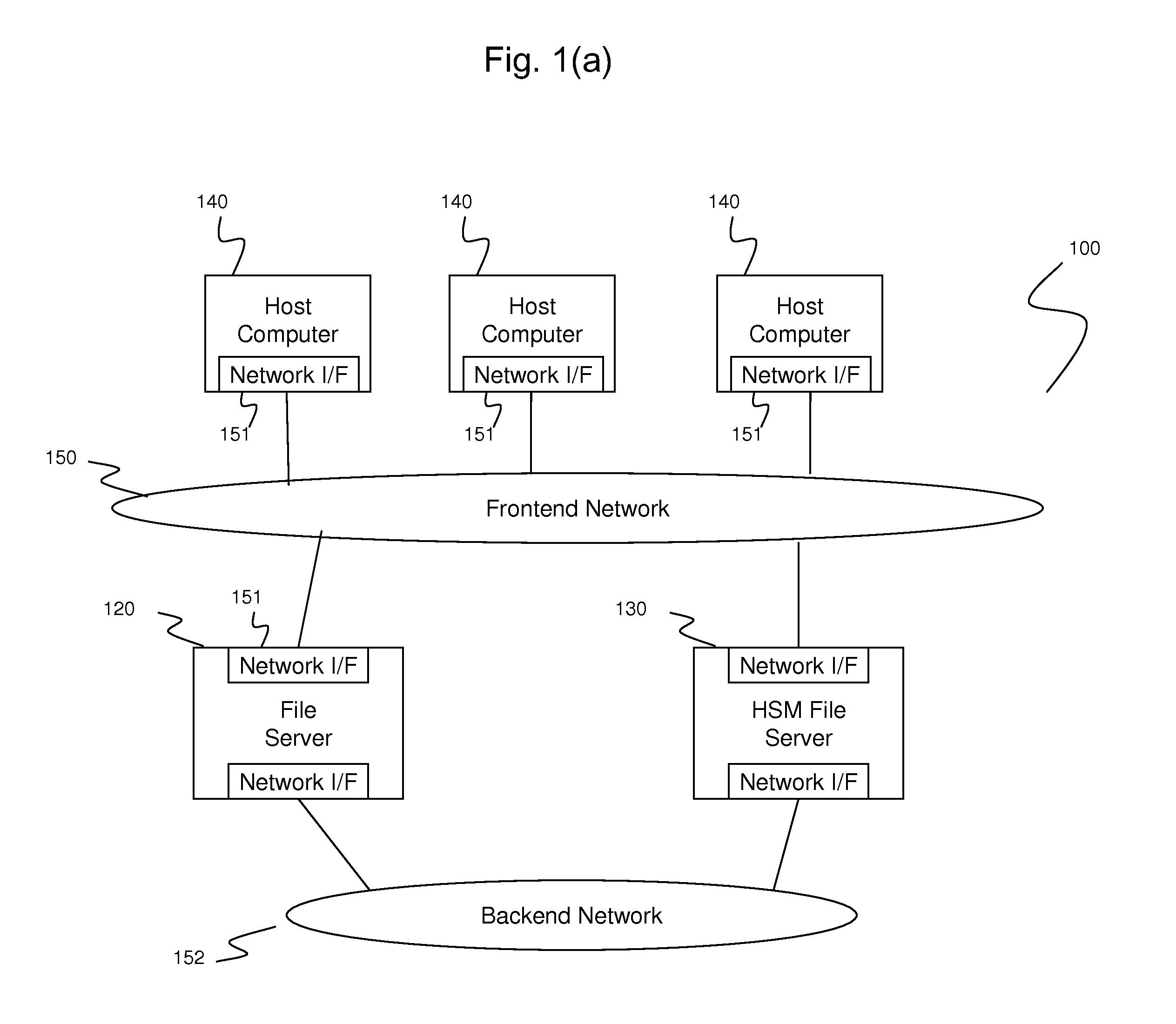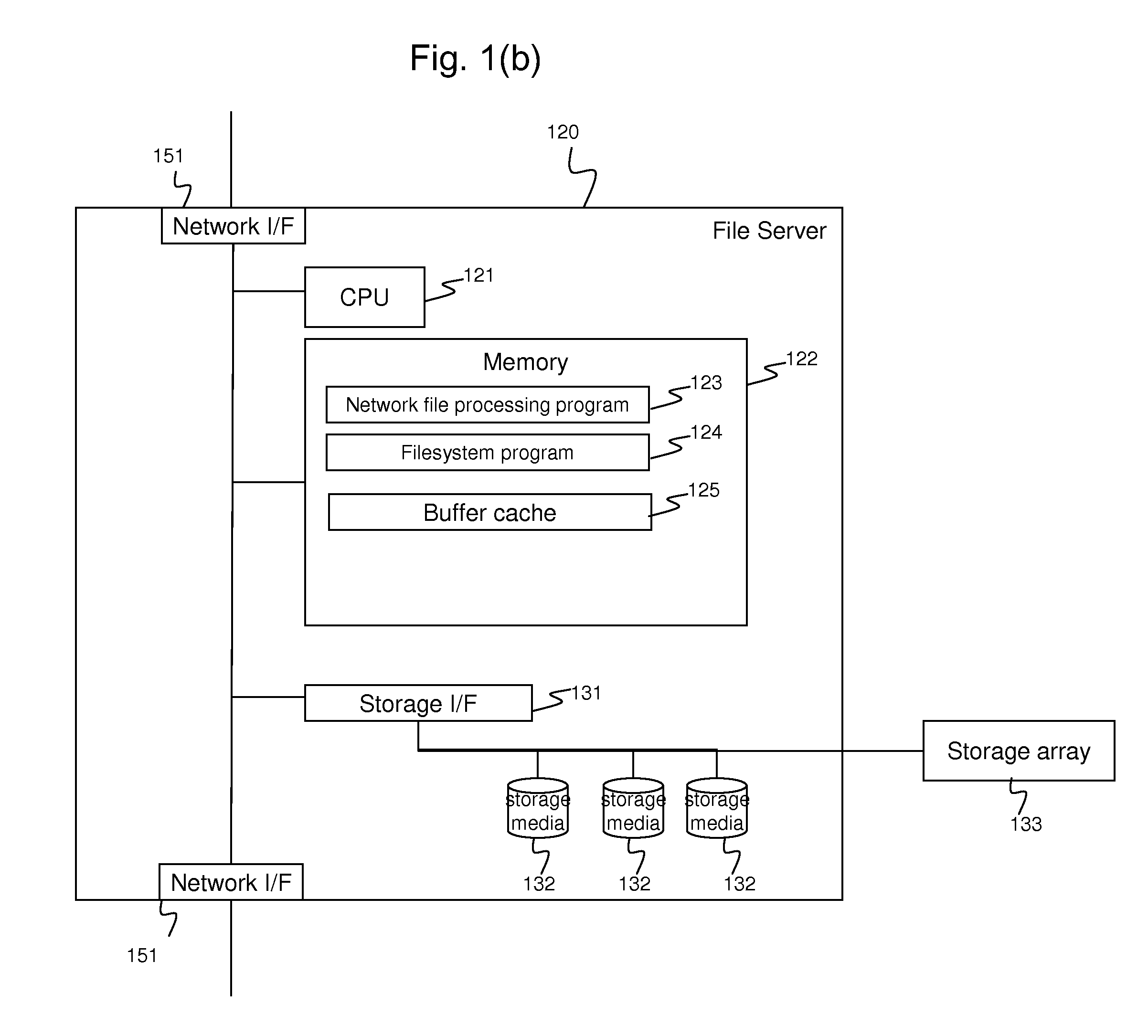Data synchronization among file storages using stub files
a file storage and data synchronization technology, applied in the field of storage systems, to achieve the effect of non-disruptive file storage system transition
- Summary
- Abstract
- Description
- Claims
- Application Information
AI Technical Summary
Benefits of technology
Problems solved by technology
Method used
Image
Examples
first embodiment
[0032]A. System Configuration
[0033]FIGS. 1(a), (b), (c), and (d) show an example of the information system overview 100 in which the method and apparatus of the invention may be applied. The information system 100 includes a file server 120, a HSM file server 130, a frontend network 150, a backend network 152, and one or more host computers 140.
[0034]The file server 120 is the old file server from which users of the information system 100 want to transit to the newer file server 130. As seen in FIG. 1(b), the file server 120 includes a CPU 121, a memory 122, a storage interface 131, and network interfaces 151. The file server 120 may also have storage media 132. The CPU 121 controls the devices in the file server 120 using the programs in the memory 122. The memory 122 has programs and cache. The network interfaces 151 are used to communicate with the host computers 140 via the frontend network 150 and other file servers including the HSM file server 130 via the backend network 152....
second embodiment
[0054]Data synchronization via the backend network 152 takes much time, especially if the file storages 120 and 130 are distant, because generally the bandwidth of the network becomes less as the distance becomes longer. There is another synchronization method that the users can use to add storage media 132 into the file server 120, copy data among the storage media 132 internally, carry these media physically, install the media into the new HSM file server 130, and copy data among the media 132 in the new server 130. This method is effective, especially when the bandwidth of the backend network 152 is much lower than that of the internal copy among the storage media 132.
[0055]However, a problem remains that the physical transfer and installation of the storage media 132 take much time, even if these processes are much faster than the completion of synchronization via the backend network 152. The users can continue their business during the synchronization. When data synchronization...
third embodiment
[0063]FIGS. 8(a), (b), and (c) show an example of the information system overview 800 in which the method of this invention is not applied. As seen in FIG. 8(a), the local information system 850a comprises the existing file server 810 which is the same as the file server 120 of FIG. 1(a), host computers 140, and frontend network 150. The information system overview 800a is made of a single local information system 850a. As a result, a disaster such as earthquake or power blackout stops the local information system 850a and causes a loss of data stored in the existing file server 810.
[0064]The information system overview 800b includes a remote file server 820, as seen in FIG. 8(b). The host computers 140 in the local information system 850b issue file I / O requests to the remote file server 820. The remote file server 820 is the same as the file server 120 but located distantly from the local information system 850b so that the remote file server 820 remains unaffected by disaster and...
PUM
 Login to View More
Login to View More Abstract
Description
Claims
Application Information
 Login to View More
Login to View More - R&D
- Intellectual Property
- Life Sciences
- Materials
- Tech Scout
- Unparalleled Data Quality
- Higher Quality Content
- 60% Fewer Hallucinations
Browse by: Latest US Patents, China's latest patents, Technical Efficacy Thesaurus, Application Domain, Technology Topic, Popular Technical Reports.
© 2025 PatSnap. All rights reserved.Legal|Privacy policy|Modern Slavery Act Transparency Statement|Sitemap|About US| Contact US: help@patsnap.com



